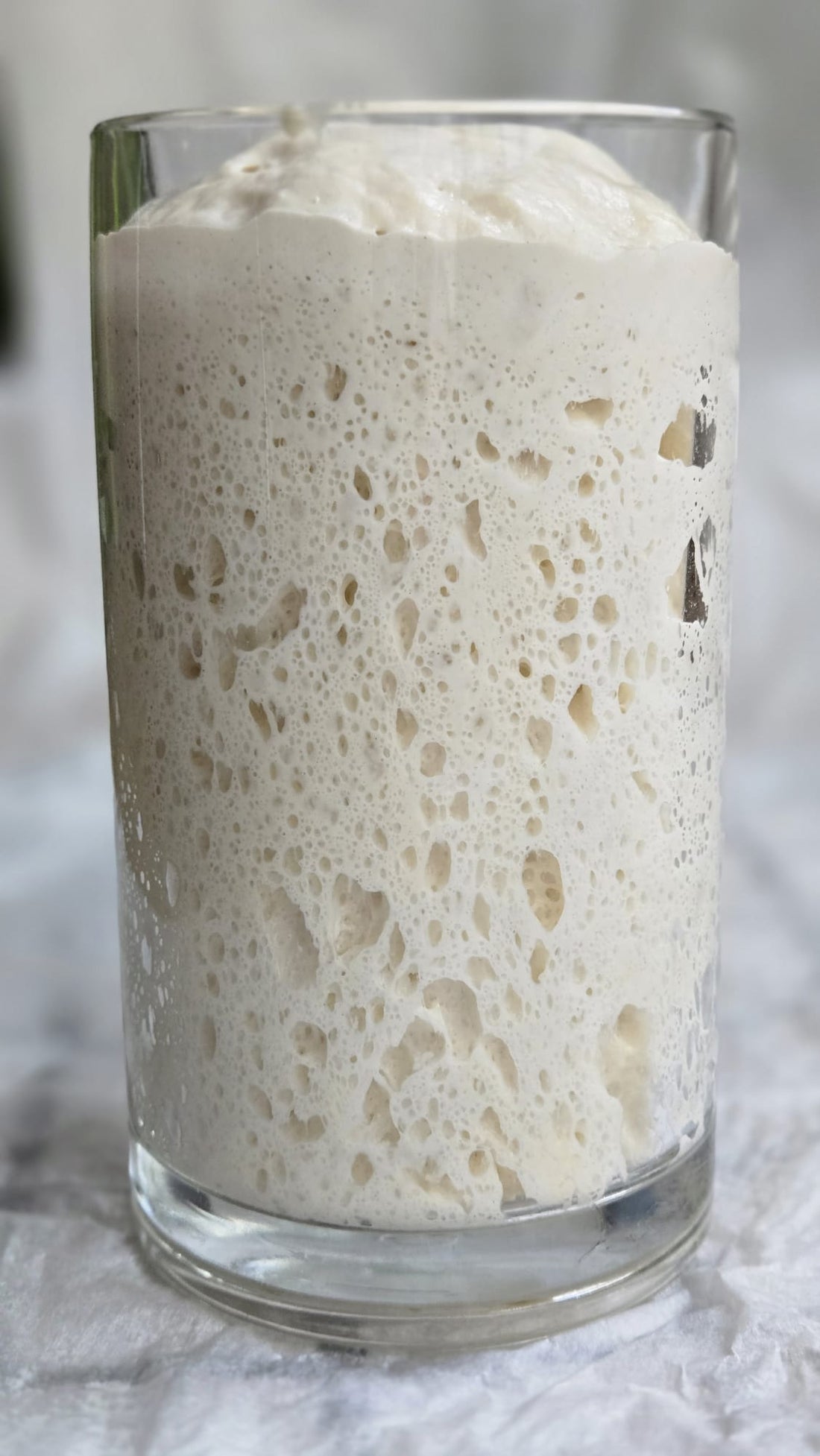How to maintain your sourdough starter

If you read my blog about how to make your own sourdough starter from scratch you may be wondering how to maintain your starter.
My recommended ratios for maintaining a healthy sourdough starter are at minimum a 1.5.4 ratio. If you bake often and feed your starter every day, you never place it in the fridge, I recommend a feeding schedule between 1.6.4 ratio up towards as high as 1.10.7 You can adjust and experiment with these ratios until you get something that consistently works well for you. Every home is different, humidity, temperature varies. The flour you use may be different depending on your country/region. But to keep a long story short, you want to do larger feeding (more flour than sourdough starter) and lower hydration (less water than flour).
This is why
When I first began experimenting with sourdough, most of the information I found online was to feed equal ratios every 24 hours. For example you takes 50 grams of starter, 50 grams of flour and 50 ml of water and feed. I was able to bake bread, but the results were inconsistent. My starter was runny, the peak window was short, and it was easy to miss it. I found this frustrating, and began to dig deeper into sourdough starter health. This is when I learned about how easily your starter can become overly acidic when fed with equal ratios. An acidic starter is when the lactic acid bacteria in your sourdough starter has an overgrowth, and is outcompeting the yeast in your starter. You want there to be a certain amount of this bacteria, but too much can weaken your starter, and eventually it will no longer rise. You may also notice that your bread is showing signs of being over-proofed and under-proofed at the same time.
I decided to make a change, I fed my starter at a 1.5.5 ratio. I took 20 grams of starter, 100 grams of flour and 100 ml of water. After about 2-3 days I noticed the smell and appearance of my starter drastically improved. The odor reminded me more of yoghurt and that strong acetone smell was almost completely gone. My starter would take longer to reach peak, but once it did, the window of opportunity to bake was much longer. My bread had better oven-spring and I no longer saw signs of large uneven tunneling.
I continued my research and learned about stiff starters. A stiff starter is a sourdough starter that is fed with 65% of less hydration. To make it more clear, if you are feeding your starter with equal amount of flour and water, lets say 100 grams flour, and a 100 ml water that is 100% hydration. An example of 65% hydration would be 20 grams of starter 100 grams of flour and 65 ml of water. The percentage is in relation to the amount of flour you use.
I decided to try it.
I found that I had to spend more time mixing the starter as it was now the same consistency as a thick dough. It took significantly more time for the starter to reach peak, and once it peaked it would remain at peak for hours. This was one of my favorite aspects. However, I also learned that it was beneficial to wait towards the end of the "peak" period and that waiting for the dough to rise until it stopped was a little deceiving in whether it was actually reaching peak, what I would do was remix the the sourdough starter and watch is grow to the top again.
I now keep multiple starter jars with different feeding ratios. I keep the feeding ratio consistent. When I bake I take a small amount from the jar I think will serve best, and I feed similar hydration as the recipe I am using. This is called a levain (I may talk more about this later.) Essentially the day I am baking I am not only feeding my sourdough starter, but I am creating a levain that will match my recipe more closely. I find this to be the best method for me personally, especially when I am baking something other than bread.
Fridge
If you are not planning on feeding every single day, keep your sourdough starter in the fridge to prevent it from growing mold. You can keep it in the fridge for weeks or even months, without it growing mold or going bad. It will however, weaken over time when it is in the fridge and the longer you leave it the more hooch it is going to build up. Pour and scrape the hooch off, and feed your starter to reactivate it. It may take a few days of feeding. Some people say you can just blend the hooch back into your starter. You can. But I don't recommend it as it can make the flavor rather.. blah.
What is hooch? Hooch is a mixture of water and alcohol that you will normally see rise to top of your starter. It is liquid and grey in colour.
If you see fussy hairs growing on your starter, colours like red/green/orange... well you might have some bad bacteria or mold growing. If this happens to you. Throw it out, I will never recommend that you try to refeed your starter once it shows signs of mold. It is better to start over or grab your backup.